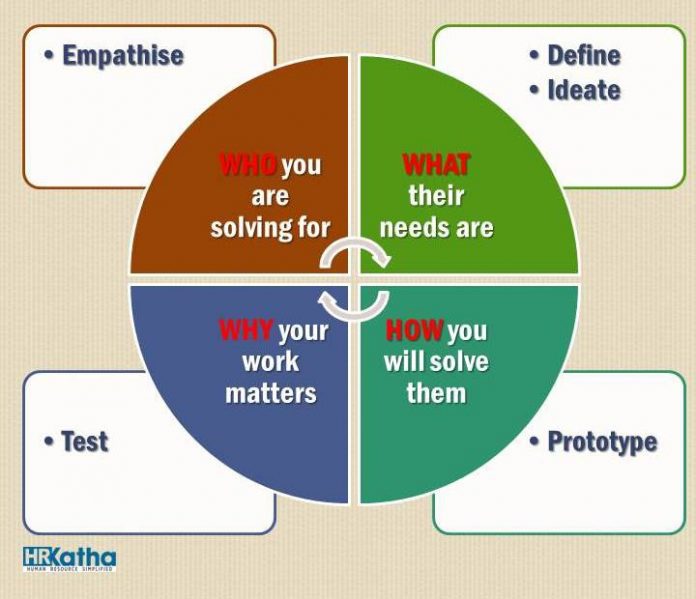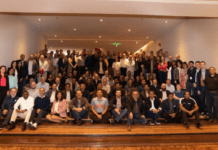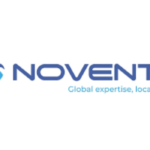Design thinking draws upon logic, imagination, intuition, and systemic reasoning, to explore possibilities of what could be, and to create desired outcomes that benefit the end user, be it the customer or the employee.
All successful marketers claim to know their customers well. It’s the understanding of the customer’s needs that enables them to design products or services, and also the communication plan to reach out to the customers. If this was true to its core, there would not be any failed brand in this world.
Can we say the same about human resources? Does HR know its entire workforce well? If it does, there would be zero attrition in a company with 100 per cent productivity!
This is where design thinking comes into play. It’s a methodology, which allows HR to understand people’s needs and motivations – what they see, experience and feel.
For instance, let us say we are designing a drilling machine and our study says people want smaller machines, say quarter-inch drills. We will be completely wrong because people aren’t bothered about the size of the drills. Rather, they need quarter-inch holes. To be even more precise, they are only interested in the hole because they want to hang a picture.
This very realisation — the ability to understand what customers want, or in case of HR, what the employee really wants— comes with design thinking. Otherwise, it’s a half-hearted embrace of innovative approaches.
Similarly, design thinking can be used to work through problems to find meaningful solutions for people. This is something that does not happen in many HR projects.

Abhijit Bhaduri, chief learning officer, Wipro says, “When you are working on one policy that fits all, design thinking is a must.”
Bhaduri adds, “This methodology is not just applicable for conceptualising serious policies, it can be effective while designing simple stuff as well.”
In simple words, ‘design thinking’ draws upon logic, imagination, intuition, and systemic reasoning, to explore possibilities of what could be, and to create desired outcomes that benefit the end user, be it the customer or the employee.
Bhaduri cites an interesting example, “Suppose one is designing a cafeteria in an office. How will one organise the seating arrangement? Will it allow different groups of three-four people to lunch together like silo teams, or should the design be such that there are chances of further interaction between these groups? If we understand the needs of the employees better, we will be able to effectively design the cafeteria as well.”
Design thinking helps the HR to understand its people better and also come up with better solutions.
In fact, design think can turn out to be an effective tool in terms of training and development or even talent management.
It basically prepares one well with the ‘go to customer’ strategy and in case of HR, the ‘go to people’ strategy.
“Suppose when one is designing a cafeteria in an office — how will one organise the sitting arrangement. Will it be in a way where different groups of three-four people can lunch together like silo teams, or should we design it such a way that there are chances of further interaction between these groups. If we understand the needs of the employees better, we will be able to effectively design the cafeteria as well.”
“The CHRO has to build credibility in the function. He also has to earn his proximity to the CEO and the leadership through sheer functional excellence and value creation for the business and the end customer. Design thinking in people processes in terms of organisational structure, work flow, high performing org (HPO), leadership development and talent architecture can add tremendous value. It can ensure simplicity of execution and drive clarity of purpose and output,” says Rajesh Padmanaban, director & group CHRO, Welspun Group.
For instance, design thinking can be quite effective in preparing the leaders of tomorrow. A leadership design of business need and creation of leaders will drive making leaders of tomorrow versus today. Clearly and consequently, the curriculum design to build effectiveness of today and scalability for tomorrow.
“Design thinking enables a systematic way of doing things and simplifies the collaborative way of functioning,” adds Padmanabhan.

As per the Global Human Capital Trends by Deloitte, design thinking is emerging as a major trend in HR. The report identified HR’s attempts to ‘simplify’ the work environment as a response to the overwhelmed employee situation.
Innovative HR organisations are taking their efforts a step further by incorporating design thinking into their approach to managing, supporting, and training people. Instead of building ‘programmes’ and ‘processes’, leading HR organisations are studying people to help develop interventions, apps, and tools that help make employees less stressed and more productive.
As per the Deloitte survey, 79 percent of executives rank design thinking as high priority when it comes to meeting talent challenges. While only 12 per cent of respondents, overall, believe that design thinking is prevalent in their current talent programmes, 50 per cent of those executives who rate their talent programmes as excellent state that they apply design thinking well. Self-identified high-performing companies are three to four times more likely than their competitors to be applying design thinking to their people practices.
“Design thinking in people processes in terms of organisational structure, work flow, high performing org (HPO), leadership development and talent architecture can add tremendous value.”
Infosys is one company, which is using design thinking workshops to empower and change the mindset of its 170,000+ employees. In the last one year, the company has trained over 36,000 employees, including 500 senior executives on design thinking principles.
For instance, in a normal workshop, most participants will say nothing more than a few words during the entire session. However, a workshop based on design thinking will have an integrative approach, with participants being significantly more agile and active.
For HR, design thinking enables new HR processes, roles and IT systems. In other words, it facilitates user-centricity. The users are, above all, the managers and employees of the company, as well as the experts in the HR department. Besides, with design thinking, the potential for innovation in the company can be tapped and HR can take on a pioneering role.
Value our content... contribute towards our growth. Even a small contribution a month would be of great help for us.
Since eight years, we have been serving the industry through daily news and stories. Our content is free for all and we plan to keep it that way.
Support HRKatha. Pay Here (All it takes is a minute)





































Good subject to brainstorm. We can apply QFD to PMS and others System at developing stage.
Triangular chart in place of 9 box model. ..
etc.,
good subject brainstorm